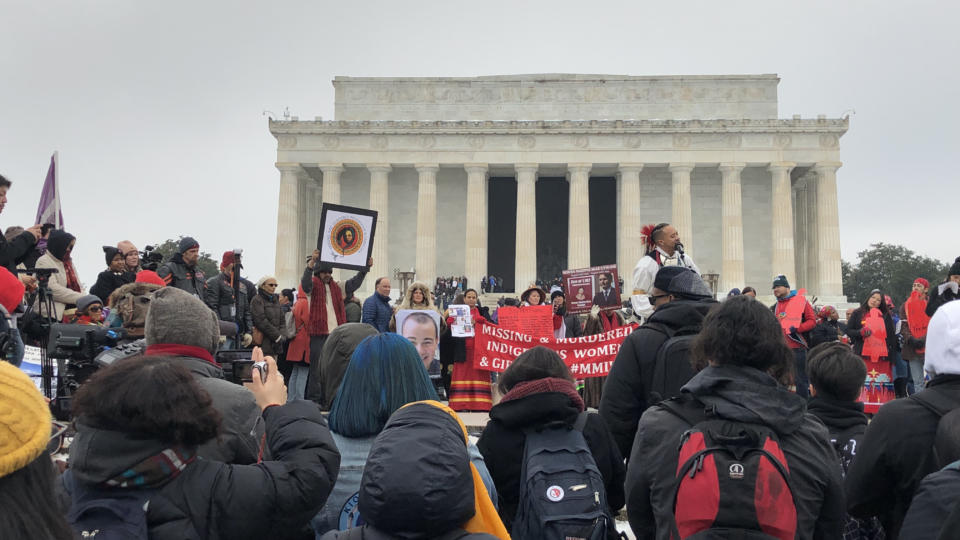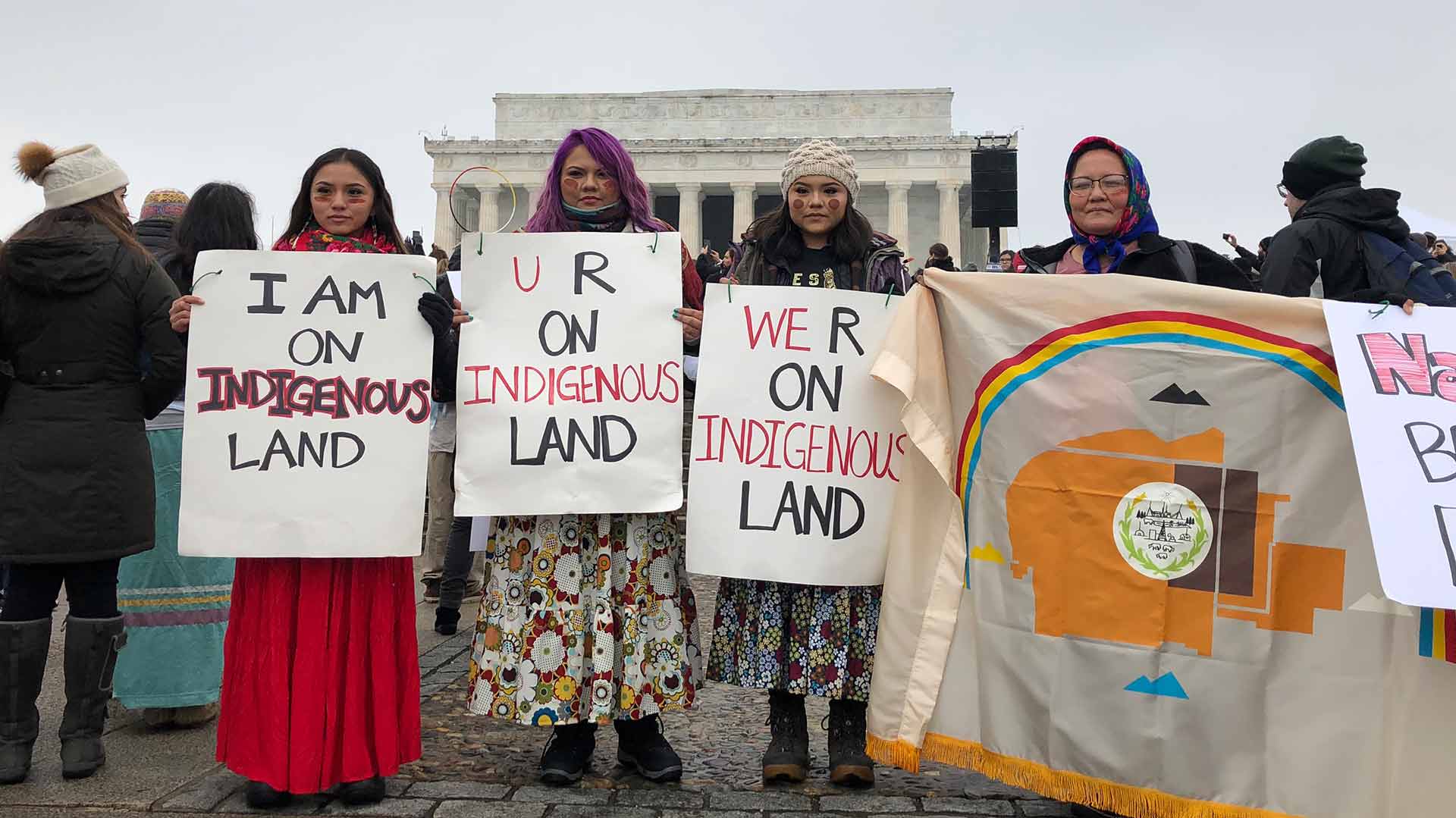On Friday, Jan. 18, 2019, thousands of Native Americans marched on Washington to raise awareness for a multitude of issues about indigenous rights.
While a limited number of mainstream media covered the actual event (CGTN America did), it’s what happened as the march was ending that’s captured the attention of the entire nation and people from all political spectrums.

Hotly debated image shows Native American Nathan Phillps drumming on the Lincoln Memorial, while a student from a Kentucky Catholic school looks him in the eye.
By now, nearly everyone has seen the footage of Native American elder Nathan Phillips drumming and singing as he is surrounded by a large cheering group of teenage students from a Kentucky Catholic school, some making a tomahawk chop gesture offensive to many Native Americans, and many wearing red Make America Great Again caps.
One student in particular stares closely, in what some have said in a mocking way, at Phillips. Days later, other footage emerged showing that the students had been antagonized earlier by another group and many were cheering to counter them. The student staring also issued a statement saying he was not mocking Phillips but trying to diffuse the situation, causing many Conservatives to claim the video as “fake news”.
While the war over what happened wages on, lost in the internet chatter are the very issues that indigenous people wanted to raise awareness about. CGTN spoke to some of those who attended the march and they shared some of the most pressing concerns facing indigenous communities right now.
Dakota Access Pipeline, impact of government shutdown, U.S. legacy of cultural assassination
Tokata Iron Eyes, a 15-year-old who attended the Indigenous People’s March, spoke about her life on the Pine Ridge Indian Reservation, the impact of the government shutdown on native communities, and the painful legacy of Indian schools.
Indigenous land rights, Native American identity
Chase Iron Eyes, an attorney with the Lakota People’s Law Project about indigenous land rights, the U.S. government’s history with Native American communities, and the legacy of the Standing Rock protests.
Missing and murdered indigenous women
Morning Star Gali discusses the need to investigate the thousands of cases missing and murdered indigenous women across the United States. According to march organizers, 7,000 Native American women have been missing and murdered since 2016. Activists say that indigenous women don’t receive the same treatment from police and the press as other women who have been murdered or are missing.
Indigenous migrants crossing the southern U.S. border
Carolina Rubio-MacWright, an immigration attorney, has worked with indigenous children and families in U.S. custody after crossing the southern border. She shareds her experiences working with an indigenous girl who was separated from her mother for 57 days. Indigenous people face persecution in their home country, the arduous migration trek, and detention and language barriers once they cross the U.S. border, Rubio-MacWright said.
Other issues
Organizers also wanted to raise awareness on issues including the the shooting deaths of Native American by police. A CNN investigation found that Native Americans are killed in police encounters higher than any group.
Many Native American groups are fighting the Keystone XL Pipeline that will be placed along the Mississippi River, some on Native American land.
They are also concerned about the Line 3 pipeline in Minnesota that will replace an aging pipeline in the
state and transport crude from Canada to Wisconsin.
Many are also protesting the land reduction of Bears Ears National Monument in Utah by President Donald Trump in 2017. The monument was first established by former President Barack Obama in 2016 and was 1.3 million acres. The land has cultural and religious significance to five local tribes. Trump reduced the monument by 85 percent, allowing for commercial mining to take place on these lands.
Native American groups continue to call for the changing of Native American mascots that they say are racist and derogatory.
 CGTN America
CGTN America



